8WCSCM Keynotes
Session Chair: Andrew W. Smyth (Columbia University, U.S.A.)

Complete registration and login to get the Zoom link and passcode
Advances in Computer Vision Employing Deep Learning
Dr. Mubarak Shah
Center for Research in Computer Vision
University of Central Florida,
U.S.A.
Date & Time: June 6 09:00 - 09:45
Abstract
Computer Vision deals with automatic analysis of images and videos by computers. It has applications in Self-Driving cars, video surveillance, medical imaging, smart cities, visual inspection etc. During the last few years, Deep Learning involving Artificial Neural Networks has been disruptive force in computer vision. Employing deep learning, tremendous progress has been made in a very short time in solving difficult problems and very impressive results have obtained. I will start with a very brief overview of UCF Center of Research in Computer Vision, and then discuss my current research projects on Human Activity Recognition, Video Object Segmentation, Drone Video Analysis, Anomaly Detection, Building Damage Assessment, Cross-View Geo-localization, Multi-Object Tracking.
Bio-sketch of Mubarak Shah
Dr. Mubarak Shah, the UCF Trustee Chair Professor, is the founding director of Center for Research in Computer Visions at University of Central Florida (UCF). Dr. Shah is a fellow of ACM, IEEE, NAI, IAPR, AAAS and SPIE; and a member of Academy of Science, Engineering and Medicine of Florida (ASEMFL). He has published extensively on topics related to visual surveillance, tracking, human activity and action recognition, object detection and categorization, shape from shading, geo registration, visual crowd analysis, etc. He has been ACM and IEEE Distinguished Visitor Program speaker and is often invited to present seminars, tutorials and invited talks all over the world. He is a recipient of ACM SIGMM Technical Achievement award; ACM SIGMM Test of Time Honorable Mention Award for his paper in Proceedings of the 14th ACM International Conference on Multimedia, MM 06; International Conference on Pattern Recognition (ICPR) 2020 Best Scientific Paper Award; IEEE Outstanding Engineering Educator Award; Harris Corporation Engineering Achievement Award; an honorable mention for the ICCV 2005 Where Am I? Challenge Problem; 2013 NGA Best Research Poster Presentation; 2nd place in Grand Challenge at the ACM Multimedia 2013 conference; and runner up for the best paper award in ACM Multimedia Conference in 2005 and 2010. At UCF he has received Pegasus Professor Award; University Distinguished Research Award; Faculty Excellence in Mentoring Doctoral Students; Scholarship of Teaching and Learning award; Teaching Incentive Program award; Research Incentive Award.
Session Chair: Andrew W. Smyth (Columbia University, U.S.A.)
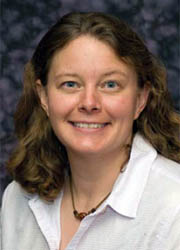
Complete registration and login to get the Zoom link and passcode
Smart and Resilient Extraterrestrial Habitats
Dr. Shirley Dyke
Professor of Mechanical Engineering and Civil Engineering
Purdue University,
U.S.A.
Date & Time: June 6 09:45 - 10:30
Abstract
The creation of safe and comfortable habitations is one of humankind’s oldest activities. Millennia of trials have brought the design and operation of habitats on Earth to a high degree of sophistication. However, as we consider moving out into Space, new challenges related to these harsh and unknown environments will impede safety and thus, progress. Designing to withstand the demands that such extreme environments will place on long-term deep space habitats represents one of the greatest challenges in this undertaking, and is the main the know-how to establish deep space habitat systems that are smart and resilient. We define SmartHabs as habitats that have the ability to sense, anticipate, respond to, and learn from disruptions. Resilience requires that we first develop an understanding of the system architecture and features that are needed to support resilience in a space habitat system. However, system architecture alone is not sufficient, so we are working on techniques to extract the necessary amount of actionable information for repair and recovery through monitoring and embedded intelligence. The mission of the Resilient ExtraTerrestrial Habitats Institute (RETHi) is to provide situational awareness and autonomy to enable the design of habitats that are able to adapt, absorb and rapidly recover from expected and unexpected disruptions. Both fully virtual and coupled physical-virtual simulation capabilities are being established to enable us to explore a wide range of potential deep space SmartHab configurations and operating modes.
Bio-sketch of Shirley Dyke
Professor Shirley Dyke holds a joint appointment in Mechanical Engineering and Civil Engineering at Purdue University. She is the Director of Purdue's Intelligent Infrastructure Systems Lab and the Director of the NASA funded Resilient ExtraTerrestrial Habitat Institute. Dyke is the Editor-in-Chief of the journal Engineering Structures. Her research focuses on “intelligent” structures, and her innovations encompass structural health monitoring and machine learning for structural damage assessment and reconnaissance support. She holds a B.S. in Aeronautical and Astronautical Engineering from the University of Illinois, Champaign-Urbana in 1991 and a Ph.D. in Civil Engineering from the University of Notre Dame in 1996. She was awarded the Presidential Early Career Award for Scientists and Engineers from NSF (1998), the International Association on Structural Safety and Reliability Junior Research Award (2001) and the ANCRiSST Young Investigator Award (2006).
Session Chair: Richard Christenson (University of Connecticut, U.S.A.)

Complete registration and login to get the Zoom link and passcode
The physics-based path to learning, monitoring and virtualizing dynamical systems
Dr. Eleni Chatzi
Chair of Structural mechanics and Monitoring
Department of Civil, Environmental and Geomatic Engineering, ETH Zurich, https://chatzi.ibk.ethz.ch/,
Switzerland
Date & Time: June 6 10:45 - 11:30
Abstract
At the core of the engineering approach lies our ability to model on the basis of first principles. Drawing from physics principles it is possible to deliver approximations of engineering systems at diverse scales and resolutions, across time and space. In this talk, we discuss how to efficiently virtualize dynamical systems, by delivering digital approximations (twins) that compute fast and well approximate actual operating systems. Critical to this is the synergy of data, stemming from monitoring, with computationally affordable models that are powered form underlying principles of dynamics and mechanics. We demonstrate a hybrid approach, which can merge data with simulations, possibly in real-time. We demonstrate Reduced Order Modeling (ROM) schemes, which are coupled with estimators, such as Bayesian filtering, for virtual sensing of dynamical systems. We lastly augment the knowledge that our approximations of physics can afford via use of physics-informed deep learning strategies that integrate models and data for enhanced learning and predictive data-driven modeling.
Bio-sketch of Eleni Chatzi
Eleni Chatzi received her PhD (2010) from the Department of Civil Engineering and Engineering Mechanics at Columbia University, New York. She is currently an Associate Professor and Chair of Structural Mechanics and Monitoring at the Institute of Structural Engineering of the Department of Civil, Environmental and Geomatic Engineering of ETH Zürich. Her research interests include the fields of Structural Health Monitoring (SHM) and structural dynamics, nonlinear system identification, and intelligent life-cycle assessment for engineered systems. She is an author of over 280 papers in peer-reviewed journals and conference proceedings, and further serves as an editor for international journals in the domains of Dynamics and SHM, including the Journal of Sound and Vibration, Structure & Infrastructure Engineering, the Journal of Structural Engineering, Mechanical Systems and Signal Processing, the Journal of Engineering Mechanics, as well as the Sections on Structural Sensing and Computational Methods in Structural Engineering of Frontiers in Built Environment. She led the recently completed ERC Starting Grant WINDMIL on the topic of "Smart Monitoring, Inspection and Life-Cycle Assessment of Wind Turbines". Her work in the domain of self-aware infrastructure was recognized with the 2020 Walter L. Huber Research prize, awarded by the American Society of Civil Engineers (ASCE). She is further recipient of the 2020 EASD Junior Research Prize in the area of Computational Structural Dynamics.
Session Chair: Richard Christenson (University of Connecticut, U.S.A.)
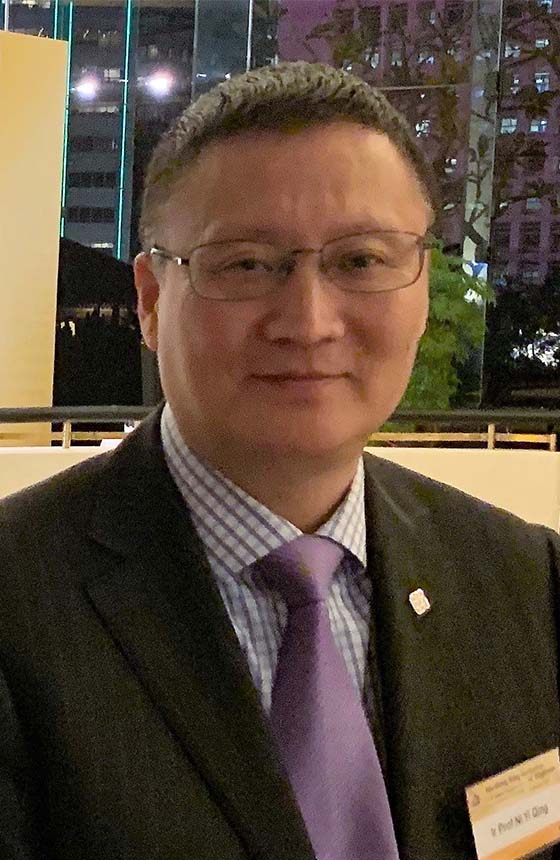
Complete registration and login to get the Zoom link and passcode
Physics-informed machine learning and transfer learning for structural health monitoring and vibration control
Dr. Yi-Qing Ni
Chair Professor of Smart Structures and Rail Transit
Department of Civil and Environmental Engineering, The Hong Kong Polytechnic University,
China
Date & Time: June 6 11:30 - 12:15
Abstract
In the past decade, we have witnessed explosive developments and applications of machine learning (mainly deep neural networks) in various science and engineering fields, including its applications in structural health monitoring and vibration control. Deep neural network models can be trained with powerful nonlinear function approximation capability with aid of rich data which are usually experimental (monitoring) or simulation results. However, when applying data-hungry deep neural networks to structural health monitoring and vibration control problems, obtaining labeled training data with regard to various damage scenarios or excitation conditions is often impractical or prohibitively expensive. The recent years have seen a revolution in deep learning with the advent of physics-informed neural networks (PINNs) for the forward and inverse problems of physical systems characterized by ordinary or partial differential equations (ODEs/PDEs), using small amounts of data or even no data. The PINNs encode the physical laws (in terms of ODEs/PDEs and their boundary/initial conditions) and prior physical knowledge into deep neural networks, so that the underlying physics can be embedded while alleviating the need for supervised learning using large amounts of labeled data. Moreover, PINNs provide a desirable platform for synergy with transfer learning to leverage the knowledge from physics and from observations and the information from multi-fidelity data. This presentation will elucidate the applications of PINNs in conjunction with transfer learning in the field of structural health monitoring and vibration control, and discuss some current bottlenecks and future research directions.
Bio-sketch of Yi-Qing Ni
Dr. Yi-Qing Ni is Yim, Mak, Kwok & Chung Professor in Smart Structures, Chair Professor of Smart Structures and Rail Transit at Department of Civil and Environmental Engineering, The Hong Kong Polytechnic University, Hong Kong. He is the Director of the National Engineering Research Center on Rail Transit Electrification and Automation (Hong Kong Branch). He has published more than 250 SCI journal papers indexed in Web of Science Core Collection and over 330 conference papers. His publications receive an H-index of 45 and more than 7,000 citations in Web of Science Core Collection, and receive an H-index of 59 and over 13,000 citations in Google Scholar. He is a Co-Editor-in-Chief for Journal of Infrastructure Intelligence and Resilience (Publisher: Elsevier) and Intelligent Transportation Infrastructure (Publisher: Oxford University Press), and serves as an associate editor or editorial board member for ten journals, including Engineering Structures, Structural Control and Health Monitoring, Smart Structures and Systems, Journal of Civil Structural Health Monitoring, Journal of Vibration and Control, Structural Monitoring and Maintenance.
Session Chair: Genda Chen (Missouri S&T, U.S.A.)
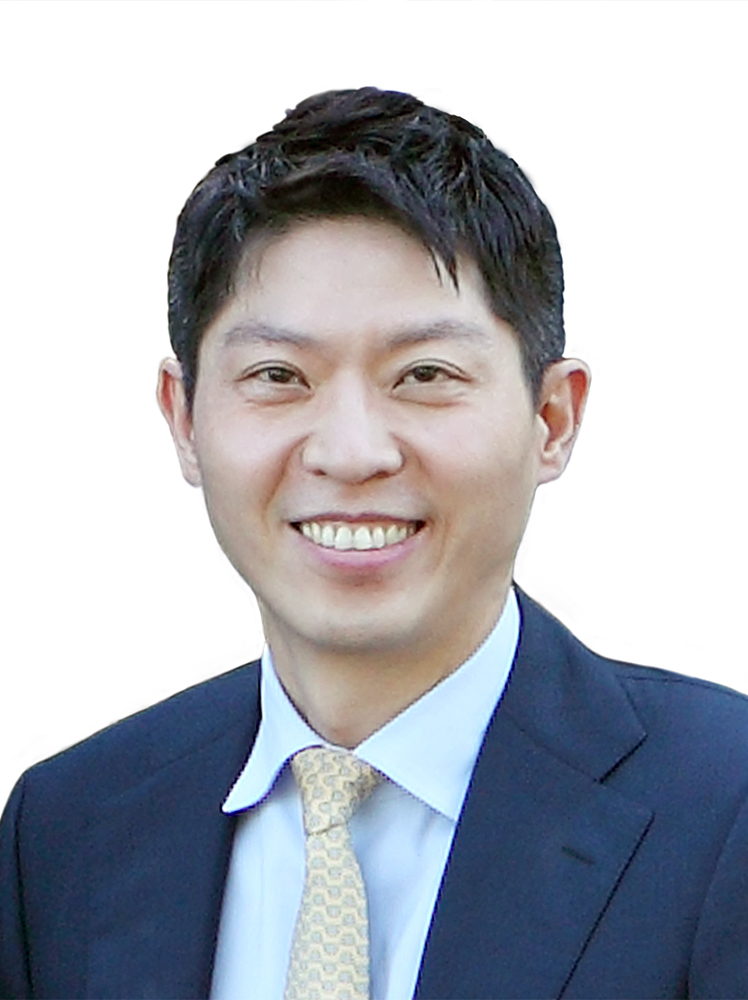
Complete registration and login to get the Zoom link and passcode
Active Thermography for Inspection, Monitoring and Control: From Technology Development to Commercialization
Dr. Hoon Sohn
Professor of Civil and Environmental Engineering
Korea Advanced Institute of Science and Technology (KAIST), Republic of Korea
Republic of Korea
Date & Time: June 7 09:00 - 09:45
Abstract
In this presentation, an active thermography system is developed for automated, noncontact, and nondestructive inspection, monitoring and control of various engineering structures. The developed system uses a laser beam or halogen lamp to heat up the target structure, and the corresponding electromagnetic radiation is measured using an infrared camera. Several real-world applications of the developed active thermography system is showcased in the presentation. First, the coating thickness and surface defects, such as corrosion, delamination, checking and chalking, of painted steel structures are visualized, classified and quantified using the active thermography system and machine learning. The active thermography system is also integrated with a drone or unmanned vehicle for automated inspection of bridges, pipelines, and ships. Other applications include online monitoring and process control during metal 3D printing and in-line inspection of electronic car batteries.
Bio-sketch of Hoon Sohn
Hoon Sohn is Professor at KAIST (Korea Advanced Institute of Science and Technology), and the Director of 3D Printing Nondestructive Testing Center sponsored by the National Research Foundation of Korea. Over last twenty-five years, his research interest has been in the areas of structural health monitoring, nondestructive testing, sensing technologies and data analytics. He has published over 200 refereed journal articles, over 390 conference proceedings, and 11 book & book chapters. He is holding 44 domestic and 16 international patents, and his developed technologies are licensed and commercialized by private companies. He is currently SPIE Fellow, Member of National Academy of Engineering of Korea (NAEK), and Member of Korean Academy of Science and Technology (KAST).
Session Chair: Genda Chen (Missouri S&T, U.S.A.)

Complete registration and login to get the Zoom link and passcode
The physical model of leak noise and leak detection of urben gas pipelines
Dr. Jie Li
Chair Professor of Tongji University, Academician of the Chinese Academy of Science
Civil Engineering School, Tongji University,
China
Date & Time: June 7 09:45 - 10:30
Abstract
Gas supply system is an essential component of modern urban infrastructural systems. Due to factors such as corrosion, mechanical or material failure, leakage of gas pipelines may lead to significant economic and energy losses. This lecture introduces a new acoustic-based method developed for leak detection as well as the leakage location for gas pipelines. The method is established on the physical model of leak noise. The model takes into account the effects of pipe pressure, pipe diameter, leak size as well as material parameters of the pipe and the gas. An machine learning method is proposed based on the physical model and statistical features of leak noise, and is applied to the leak detection of gas pipelines. Meanwhile, a physical leakage location model is developed which can be used for finding the leakage position and to determine the maximum distance of deployment location of sensors. On these basis, a model-based location technique is suggested and some application example is introduced. The new technology may offer a kind of real-time monitoring system for the maintenance of urban gas supply networks.
Bio-sketch of Jie Li
Prof. Jie Li received Ph.D. in Structural Engineering from Tongji University, China in 1988, and received an honorary doctorate in engineering science from Aalborg University, Denmark in 2013. He has been devoted to the research on structural engineering and stochastic mechanics over 35 years. His contributions are distributed in the area of stochastic dynamics, damage mechanics, engineering reliability and lifeline systems. Prof. Li is the author of six monographs and more than 400 peer reviewed journal papers. In 2014, Prof. Li was awarded the Alfred M. Freudenthal Medal by ASCE, owing to his academic achievements in the probability density evolution method and in the seismic reliability based design of large-scale infrastructure systems. Prof. Li currently serves as the president of International Association for Structural Safety and Reliability (IASSAR), a member of the director board of International Conference of Damage Mechanics (ICDM), and the Fellow of Engineering Mechanics Insititute(EMI).
Session Chair: Ho-Kyung Kim (Seoul National University, Republic of Korea)
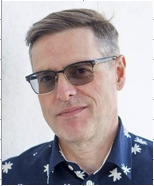
Complete registration and login to get the Zoom link and passcode
Digital Twins: The Next Phase of the AI Revolution?
Dr. Mark Girolami
Sir Kirby Laing Professor of Civil Engineering
Royal Academy of Engineering Research Chair in Data Centric Engineering, University of Cambridge,
United Kingdom
Date & Time: June 7 10:45 - 11:30
Abstract
The idea of an Intelligent Digital Avatar conjures up many images from a complete virtual world that one can safely define, develop and play in to rogue robots running amok and destroying mankind. The reality is much less dramatic but no less far reaching and exciting. This talk will discuss Digital Twins and chart their history to present day technological capability and present some of the advances being made and the opportunities along with the open challenges faced to realise the potential of Digital Twins.
Bio-sketch of Mark Girolami
Mark Girolami is the Chief Scientist of The Alan Turing Institute and took up this role from October 2021. Previous to his role as Chief Scientist he led The Alan Turing Institute-Lloyds Register Foundation programme in data-centric engineering which launched a whole new discipline that has global reach and influence.
Under his leadership, the data-centric engineering programme (DCE) grew from an initial grant to a multi-million pound global research and innovation enterprise that saw the delivery of a number of ‘world-firsts’ including the world's first self-sensing 3D printed stainless steel pedestrian bridge in Amsterdam; sustainable and more efficient underground agriculture; advanced AI enabled city scale air quality monitoring systems; the city level monitoring of social distancing and activity assessment in guiding London through the COVD-19 pandemic; the development of an AI enabled UK Air Traffic Control Service, and digital twin technologies in rail transportation and aerospace design, amongst many others.
The launch of the international Data-Centric Engineering journal by Cambridge University Press firmly established DCE as a new emerging discipline of global importance. Mark was also the driving force behind the first-ever DCEng Summit in September 2021. The event attracted international expert speakers from countries around the globe and represented a landmark moment in the growth of the discipline.
In 2019 Mark Girolami was elected to the Sir Kirby Laing Professorship of Civil Engineering within the Department of Engineering at the University of Cambridge where he also holds the Royal Academy of Engineering Research Chair in Data Centric Engineering. He took up the Sir Kirby Laing Chair upon the retirement of Professor Lord Robert Mair. Prior to joining the University of Cambridge Professor Girolami held the Chair of Statistics in the Department of Mathematics at Imperial College London.
He was an EPSRC Established Career Research Fellow (2012-2018), an EPSRC Advanced Research Fellow (2007-2012), was a recipient of a Royal Society Wolfson Research Merit Award, and in 2011 was elected to the Fellowship of the Royal Society of Edinburgh.
Session Chair: Ho-Kyung Kim (Seoul National University, Republic of Korea)
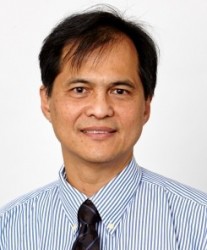
Complete registration and login to get the Zoom link and passcode
Development of scum geometrical monitoring beneath floating covers aided by UAV photogrammetry
Dr. Wing Kong Chiu
Professor of Mechanical and Aerospace Engineering
Monash University,
Australia
Date & Time: June 7 11:30 - 12:15
Abstract
Floating covers are used on anaerobic lagoons at waste-water treatment plants for odour control and the harvesting of biogas. Scum is an unwanted by-product of the anaerobic digestion of raw sewage. This matter can form into a large mass of material, and when it floats to the surface and solidifies, it is called a scumberg to differentiate it from the scum which may still be in a semi-solid state. Given the continual inflow of raw sewage into the lagoon, the potential movement of the scum can deform the floating cover. One of the challenges pertaining to the structural health assessment of the floating cover hinges upon the difficulty in monitoring the development and geometrical profile of scum underneath the cover. The current measurement of scum requires the inspector to physically access the scum either from multiple discrete access ports within the floating cover or by using highly-skilled divers in the lagoon. In collaboration with Melbourne Water Corporation, a non-contact UAV-aided photogrammetry technique has been deployed to quantify the development of scum underneath the cover. It is shown that the digital elevation model obtained from photogrammetry correlates well with direct laser-based measurements of elevation, and that cluster analysis can be used in conjunction with the digital elevation model to estimate the qualitative hardness level of the scum beneath the cover, thereby providing a viable alternative to time-consuming walk the cover type inspections. It is also shown that the total scum depth as predicted from the digital elevation model correlates well with the measurements taken through the access ports. This method could be a safe and cost-effective alternative to current practice.
Bio-sketch of Wing Kong Chiu
Professor Chiu is a member of academic staff at the Department of Mechanical & Aerospace Engineering at Monash University, Australia. He is an internationally recognised researcher in structural health monitoring and his work spans across aerospace (aircraft structures), civil (pipelines and large membrane floating covers), rail (integrity assessment of tracks) and mechanical (rotating equipment) engineering. Chiu has extended his knowledge in structural health monitoring to the medical area and has developed strong collaboration with researchers and surgeons from The National Trauma Research Institute. He is currently collaborating with Professor Fitzgerald on numerous projects. Apart from securing research funding, they have jointly filed two patents. He is co-chairing the 9th Asia-Pacific Workshop on Structural Health Monitoring in Cairns, Australia in 2022. This workshop is now widely recognised as the 3rd leg in the global workshop on structural health monitoring. With the International Workshop on Structural Health Monitoring and the European Workshop on Structural Health Monitoring being the 1st and the 2nd leg respectively. Chiu is a member of the International Organising Committee of the International Workshop on Structural Health Monitoring (held biennially at Stanford University).
